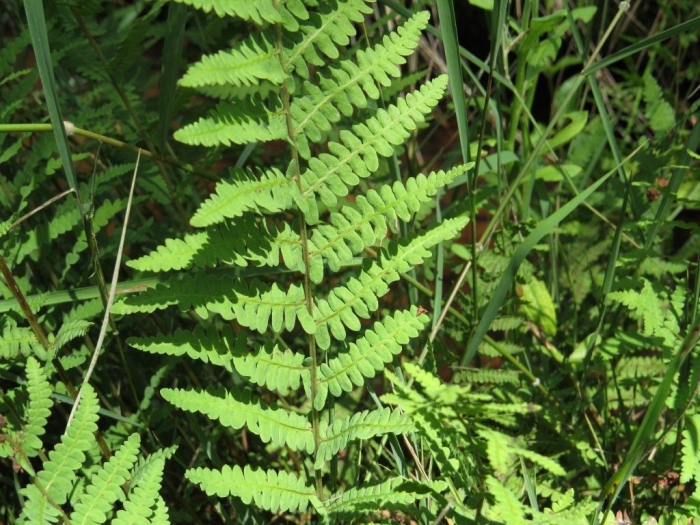Eastern Marsh Fern
(Thelypteris confluens)
Eastern Marsh Fern (Thelypteris confluens)
/
/

By Joseph Heymans no rights reserved
Public Domain
Image By:
By Joseph Heymans no rights reserved
Recorded By:
Copyright:
Public Domain
Copyright Notice:
Photo by: By Joseph Heymans no rights reserved | License Type: Public Domain | License URL: http://creativecommons.org/publicdomain/zero/1.0/ | Uploader: jaheymans | Publisher: iNaturalist |





















Estimated Native Range
Summary
Thelypteris confluens, commonly known as Eastern Marsh Fern, is a deciduous perennial fern native to a wider range of wetland habitats, including swamps, bogs, wet meadows, and stream margins in Africa, Asia, and Oceania. It typically grows to a height and width of approximately 2 feet (0.6 meters), forming dense clumps of arching fronds. The fronds are bright green with a fine texture, adding a delicate appearance to the plant. The Eastern Marsh Fern does not produce flowers, but its fronds contribute to the understory’s greenery in its native habitat and can add a lush, textured look in garden settings.
This fern is valued for its ability to thrive in wet conditions and shaded areas, making it an excellent choice for water gardens, rain gardens, and woodland garden settings. It is also used to stabilize soil in riparian zones. In cultivation, it requires consistent moisture and can tolerate poorly drained soils, which makes it suitable for areas where many other plants might struggle. While it prefers part shade or full shade, it is adaptable to a range of light conditions provided the soil remains moist. It is relatively low maintenance, but gardeners should be aware of potential issues such as rust and leaf spot diseases.CC BY-SA 4.0
This fern is valued for its ability to thrive in wet conditions and shaded areas, making it an excellent choice for water gardens, rain gardens, and woodland garden settings. It is also used to stabilize soil in riparian zones. In cultivation, it requires consistent moisture and can tolerate poorly drained soils, which makes it suitable for areas where many other plants might struggle. While it prefers part shade or full shade, it is adaptable to a range of light conditions provided the soil remains moist. It is relatively low maintenance, but gardeners should be aware of potential issues such as rust and leaf spot diseases.CC BY-SA 4.0
Plant Description
- Plant Type: Fern
- Height: 1.5-2 feet
- Width: 2-3 feet
- Growth Rate: Rapid
- Flower Color: N/A
- Flowering Season: Non-Flowering
- Leaf Retention: Deciduous
Growth Requirements
- Sun: Part Shade, Full Shade
- Water: Medium, High
- Drainage: Medium, Slow
Common Uses
Erosion Control, Low Maintenance, Potted Plant, Water Garden
Natural Habitat
Wetland habitats including swamps, bogs, wet meadows, and stream margins
Other Names
Common Names: Marsh Fern
Scientific Names: Thelypteris confluens , Thelypteris cyclolepis , Dryopteris cabrerae , Thelypteris palustris var. squamigera , Athyrium cyclolepis , Dryopteris thelypteris var. squamigera , Aspidium squamigerum , Aspidium squamulosum , Lastrea invisa , Nephrodium squamulosum
GBIF Accepted Name: Thelypteris confluens (Thunb.) C.V.Morton